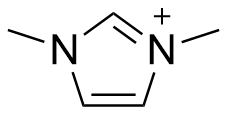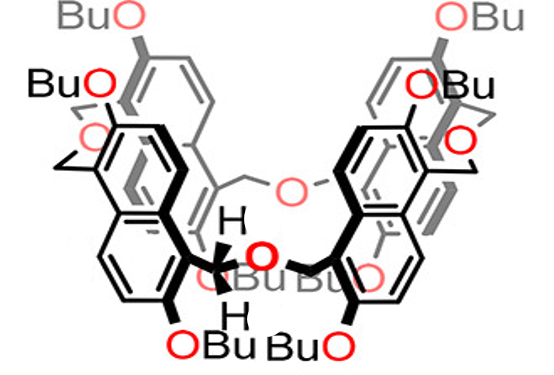Binding Properties
| 𝜈 | Molecule 1 : 1 Host | ||
| Ka = | 382.0 | ± 17.0 | M-1 |
| Kd = | |||
| logKa = | |||
| T | 25.0 °C | ||
| Energy | kJ mol-1 | kcal mol-1 | |||
|---|---|---|---|---|---|
| ΔG | = | -14.74 | ± 0.11 | -3.52 | ± 0.03 |
- Comment
- Counter ion is hexafluorophosphate anion.
These are the specifications of the determination of the experimental results.
| Detection Method: | Direct | ||
| Assay Type: | Direct Binding Assay | ||
| Technique: | Nuclear Magnetic Resonance | ||
| Nucleus | H-1 | ||
Detailed information about the solvation.
| Solvent System | Complex Mixture | |
| Solvents | Acetonitrile-d3 | 50.0 % |
| CD2Cl2 | 50.0 % | |
Please find here information about the dataset this interaction is part of.
| Citation: |
W. Jiang, L. Yang, F. Jia, D. Li, H. Wang, SupraBank 2025, Oxatub[4]arene: a molecular “transformer” capable of hosting a wide range of organic cations (dataset). https://doi.org/10.34804/supra.20230630477 |
| Link: | https://doi.org/10.34804/supra.20230630477 |
| Export: | BibTex | RIS | EndNote |
Please find here information about the scholarly article describing the results derived from that data.
| Citation: |
F. Jia, H.-Y. Wang, D.-H. Li, L.-P. Yang, W. Jiang, Chem. Commun. 2016, 52, 5666–5669. |
| Link: | https://doi.org/10.1039/c6cc01052k |
| Export: | BibTex | RIS | EndNote | |
Binding Isotherm Simulations
The plot depicts the binding isotherm simulation of a 1:1 interaction of 1,3-dimethyl-1H-imidazol-3-ium (0.05235602094240838 M) and per-Butyl Oxatub[4]arene (0 — 0.10471204188481675 M).
Please sign in: customize the simulation by signing in to the SupraBank.




